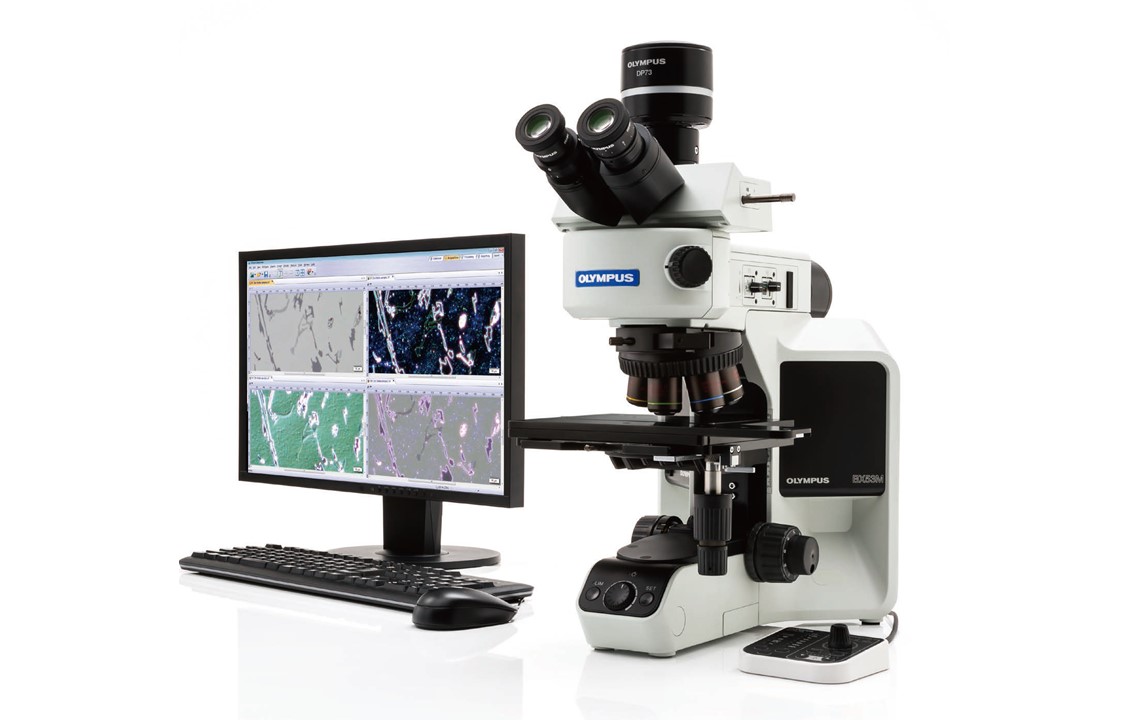Exhibitions
Departments

Purchase of equipment for a specialist workshop at the Archaeological Museum in Poznań
Project name: Purchase of equipment for a specialist Laboratory at the Archaeological Museum in Poznań
Place of implementation: Archaeological Museum in Poznań, ul. Wodna 27 Department of Non-European Archeology, Traseology Workshop Time: The task was carried out in 2017
Project coordinator: Dr Małgorzata Winiarska-Kabacińska, head of the Department of Non-European Archeology and Traseology Laboratory
Task type: Purchase of equipment for cultural activities
Financing: Co-financed under the Cultural Infrastructure from the Ministry of Culture and National Heritage funds from the Culture Promotion Fund. Objectives and methods. Purchase of a set including a specialized metallographic microscope together with a modern, optimized system for photomicrography and a computer with a software that is necessary for professional and effective operation of the Traseological Laboratory. It enables conducting specialist research and comprehensive documenting. The Archaeological Museum in Poznań has in its collection collections of unique archaeological monuments from all over Western Poland, of outstanding importance for national heritage. The Traseological Laboratory conducts microscopic observations of archaeological relics, sometimes more than 10,000 years old, made of flint, stone, bones and antlers, documenting the material culture of our ancestors. These observations are intended to enrich our knowledge about the oldest communities in its various aspects and contribute significantly to the protection of the most valuable cultural heritage. The intention of the Archaeological Museum in Poznań is to implement a program aimed at systemic protection of the greatest monuments of material culture from the area of Wielkopolska. Its first stage will be conducting in the Traseologic Laboratory specialized microscopic analyzes of the oldest archaeological monuments made of flint, bone, antlers and other raw materials, identifying techniques for their execution and traces and ways of their use. As a result of these activities, specimens will be selected for the most valuable for national heritage, with the highest cultural value, which will be subject to special museum and conservation protection. Thanks to microscopic analyzes, it will be possible to understand the significance of specific products of material culture for our ancestors, among others what function they performed and how they were used. As a result, they will enable comprehensive presentation of monuments in museum exhibitions in the proper functional and cultural context. The purchased equipment will also be used in educational activities. As part of the implementation of the task co-financed under the Culture Infrastructure program, funds from the Ministry of Culture and National Heritage funds from the Culture Promotion Fund were purchased the latest generation optical (metallographic) BX53M optical microscope for observing in light in a dark field and polarization with a digital camera and a system for archiving images. The above BX53M microscope is characterized by the additional Direct Dark Field observation technique, which enables live image display in two MIX imaging techniques: light / dark field, polarization / dark field. These two observation techniques and the possibility of segment lighting enable to see and highlight details of the sample surface. In addition, it is possible to use EFI (deepened image), which produces a sharp image and a three-dimensional image based on a series of acquisitions made along the Z axis.
Nasza strona internetowa używa plików cookies (tzw. ciasteczka) w celach statystycznych, reklamowych oraz funkcjonalnych. Dzięki nim możemy indywidualnie dostosować stronę do twoich potrzeb. Każdy może zaakceptować pliki cookies albo ma możliwość wyłączenia ich w przeglądarce, dzięki czemu nie będą zbierane żadne informacje. Dowiedz się więcej jak je wyłączyć. OK, Rozumiem

